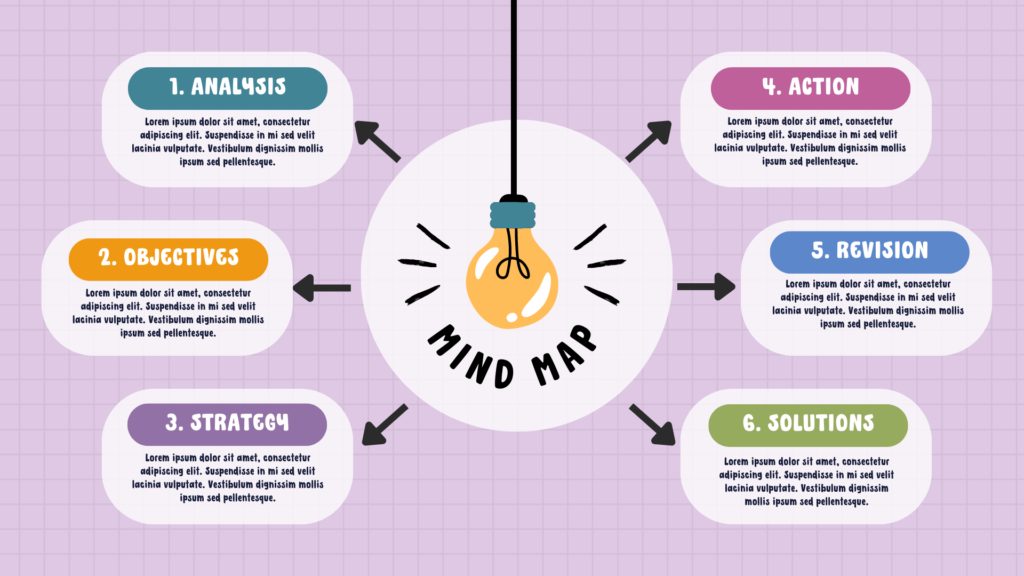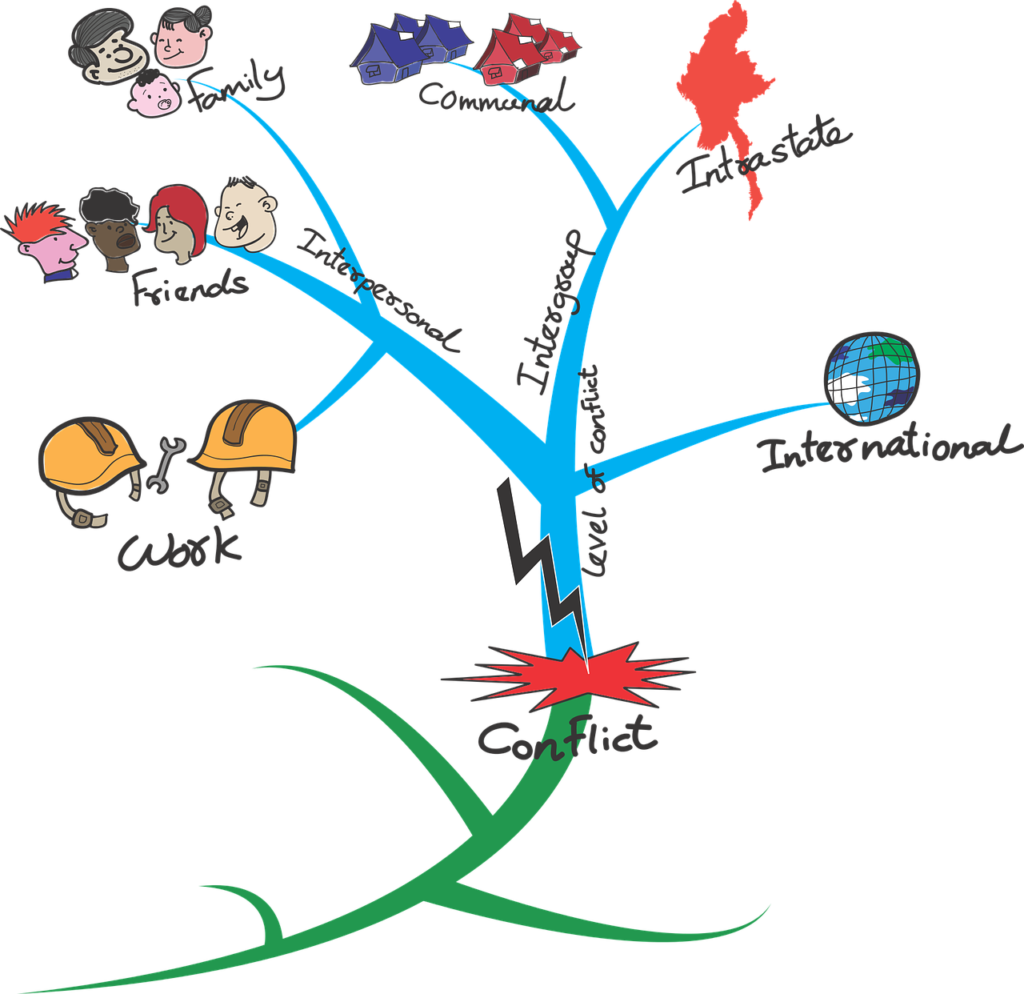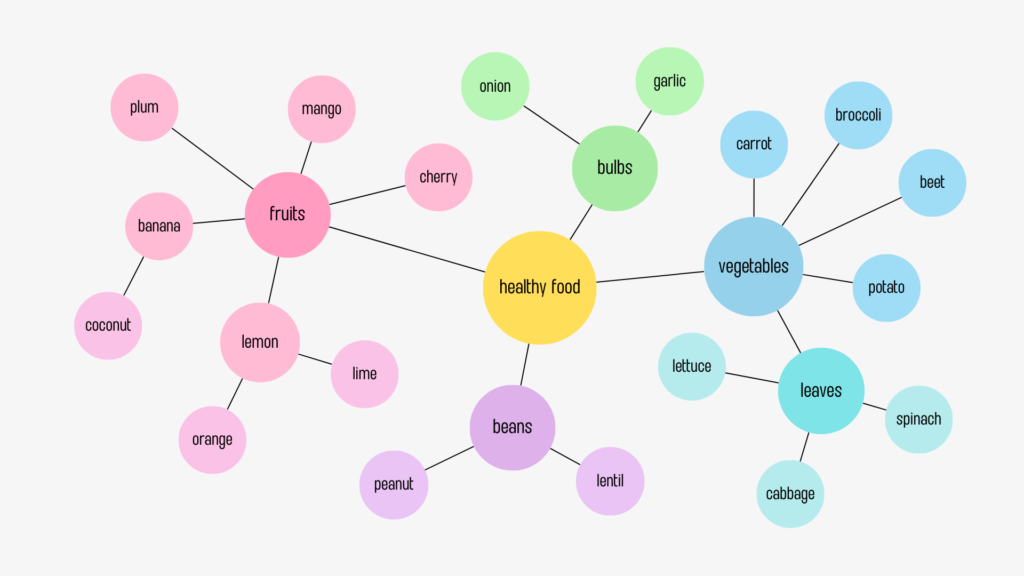Mind maps come in various forms, each designed to suit different purposes and cater to specific needs. Understanding the different types of mind maps and when to use them can enhance your productivity, creativity, and organization. So, let’s buckle up and explore the captivating landscape of mind mapping together!
Table of Contents
1. Central Mind Maps

Central mind maps, also known as radial maps, start with a central topic at the center of the map. Branches radiate outward, representing related sub-topics or ideas. This type of mind map is ideal for brainstorming, organizing thoughts, and exploring a central concept in depth.
2. Tree Structure Mind Maps

Tree structure mind maps resemble hierarchical trees, with the main topic at the root and branches representing subtopics. This format is particularly useful for organizing complex information, outlining project plans, and creating hierarchies.
3. Flowchart Mind Maps

Flowchart mind maps use arrows and connectors to illustrate the flow and sequence of ideas or processes. They are commonly used for decision-making, mapping out workflows, and identifying dependencies. This type of mind map provides a visual representation of logical connections and helps streamline complex procedures.
4. Conceptual Mind Maps

Conceptual mind maps focus on representing abstract or interconnected concepts. They aim to highlight relationships, associations, and patterns between different ideas. This type of mind map is valuable for studying complex theories, exploring philosophical concepts, or mapping out interrelated topics.
5. Time-Based Mind Maps
Time-based mind maps incorporate a temporal dimension, making them suitable for visualizing timelines, historical events, or project schedules. They help track progress, plan activities, and understand the chronological order of events. Time-based mind maps are widely used in project management, history, and event planning.
6. Spider or Starburst Mind Maps

Spider or starburst mind maps are characterized by a central hub surrounded by branches that resemble spider legs or rays. They are effective for capturing ideas, brainstorming, and visually organizing information with equal emphasis on each branch. Spider mind maps encourage free association and exploration of ideas from multiple angles.
7. Bubble Mind Maps

Bubble mind maps use round bubbles or circles to represent ideas or concepts. Each bubble can be connected through lines or connectors to show relationships and associations. This type of mind map is popular for brainstorming sessions, capturing ideas, and organizing thoughts in a visually engaging manner.
8. Fishbone Mind Maps

Fishbone mind maps, also known as cause-and-effect or Ishikawa diagrams, help analyze and identify the root causes of a problem or situation. The main topic or problem is placed at the head of the fishbone, and branches extend outward to represent different categories or factors contributing to the issue.
9. 3D Mind Maps
3D mind maps add depth and dimension to traditional flat mind maps. They create a more immersive and visually appealing experience, making them useful for presentations, creative projects, and visual storytelling. 3D mind maps can bring ideas to life and add a sense of depth to the mapping process.
10. Hybrid Mind Maps

Hybrid mind maps combine different elements or styles from various mind map types. They offer the flexibility to adapt to specific needs and leverage the strengths of different formats. Hybrid mind maps are highly customizable and can be tailored to suit specific projects, goals, or personal preferences.
Understanding the different types of mind maps empowers you to choose the most suitable format for your specific needs. Experiment with different styles, adapt them to your workflow, and leverage their visual power to enhance productivity, creativity, and organization.
FAQs
- What is the best mind map type for brainstorming sessions? Central mind maps and spider mind maps are excellent choices for brainstorming sessions. Central mind maps allow you to explore a central idea and branch out with related concepts, while spider mind maps encourage free association and exploration from multiple angles.
- Which mind map type is ideal for project planning? Tree structure mind maps and time-based mind maps are highly effective for project planning. Tree structure mind maps help create hierarchies and organize complex information, while time-based mind maps provide a visual representation of timelines and project schedules.
- Can I combine different mind map types in a single project? Absolutely! Hybrid mind maps offer the flexibility to combine different elements or styles from various mind map types. Feel free to experiment and create a hybrid mind map that best suits your project’s unique requirements.
- Are there any recommended resources to learn more about mind mapping? Yes, several books and online resources can help you dive deeper into the world of mind mapping. Some recommended reads include “The Mind Map Book” by Tony Buzan and Barry Buzan, “Mind Maps for Business” by Tony Buzan, and “Mind Mapping: Improve Memory, Concentration, Communication, Organization, Creativity, and Time Management” by Kam Knight







